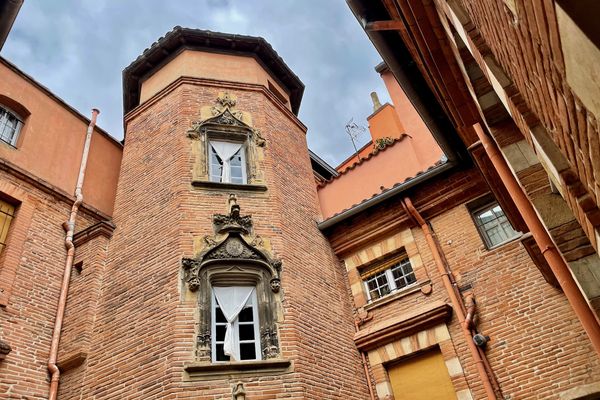
17.06.2022
Let's meet in Toulouse!
It is with great pride that we announce the opening of our fifth agency in Toulouse! After Paris (right bank & left bank), Montpellier and Uzès, it is at 19 Rue Croix Baragnon that Styles has found its home!
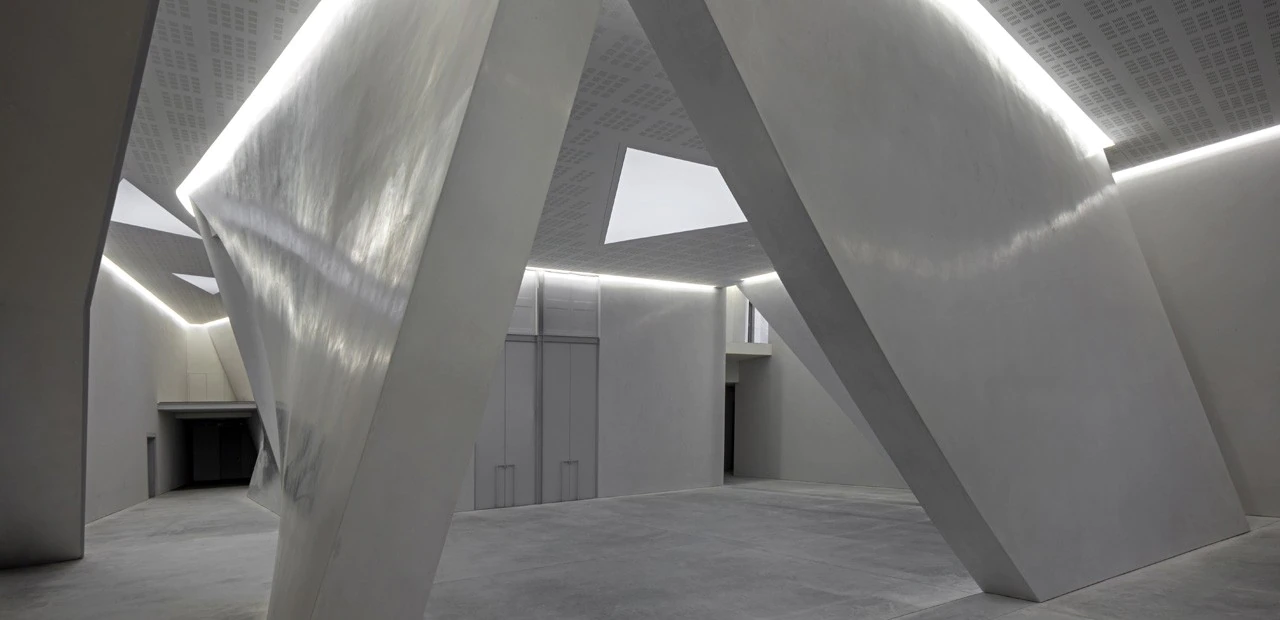
19.07.2022
Born in 1941 in Japan, Tadao Andō is an architect who belongs to the so-called critical regionalism style. His architecture draws on local cultural elements.
He is one of Japan's leading architects and one of the most important representatives of the minimalist movement in contemporary architecture.
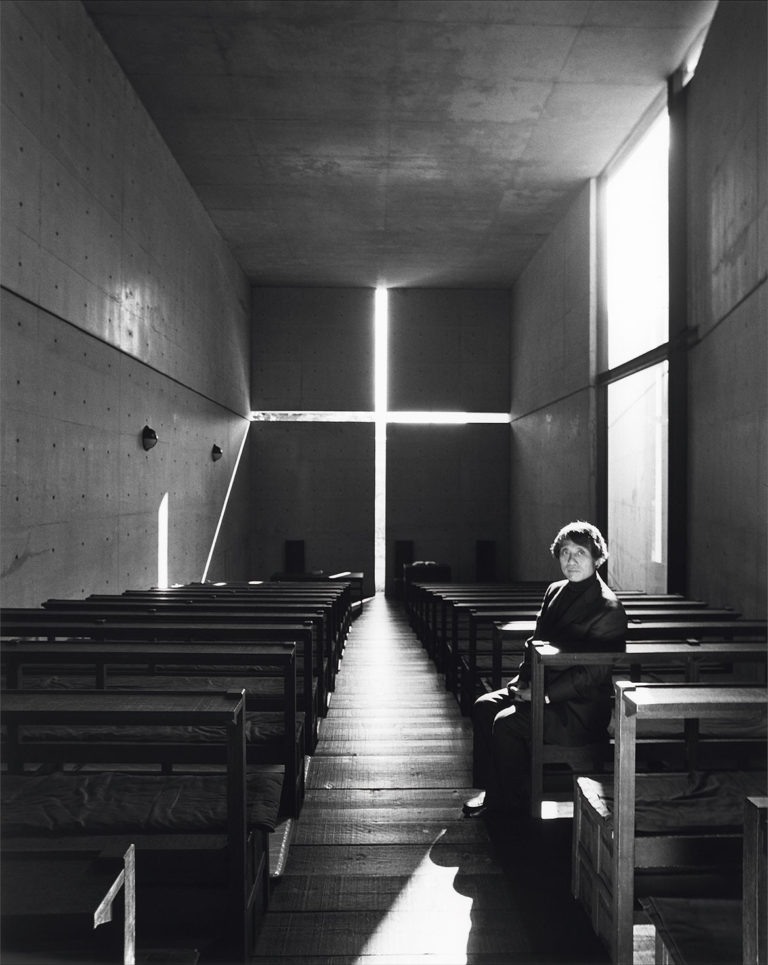
Tadao Andō grew up in a working-class neighborhood of Osaka, living with his grandmother. As a child, he learned two major precepts that would inform his work: rationalism and the spirit of independence.
Left to his own devices, he used to discover the work of the craftsmen in his neighborhood. There he discovered the diversity of materials in the field of building.
This is how his training as an architect began, in a self-taught way. A fact rare enough in Japan to be highlighted here. He also learns about architecture through the books he finds in bookstores and quickly discovers the work of Le Corbusier.
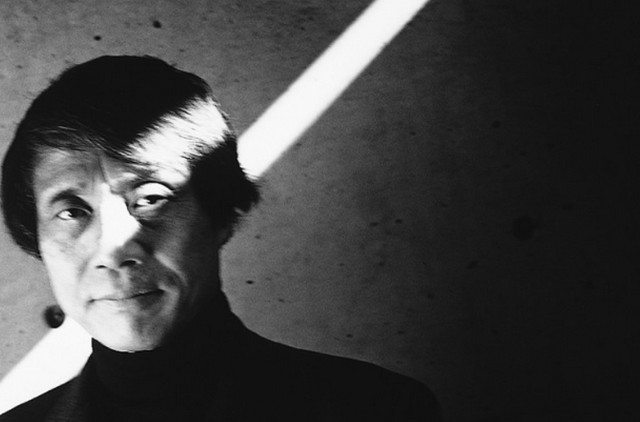
In parallel to his architectural training, Tadao Andō launched a career as a boxer, at the professional level. From 1965, thanks to his winnings from fights, he traveled to Europe, the United States and Africa.
When he disembarked from the Trans-Siberian Railway in Paris in September 1965, after a long journey that began in the port of Yokohama, Tadao Andō had a dream. To meet the French-Swiss architect Le Corbusier. He did not know that the urbanist had died at the end of August of a heart attack on the Buse beach near his "cabanon" in Roquebrune-Cap-Martin.
"I didn't speak French, I didn't speak English, I couldn't know" the Japanese architect recalls today.
Nevertheless, he could finally appreciate the architecture of the late Le Corbusier, which fascinated him completely. He visited the French architect's iconic works, such as the Swiss Pavilion of the "Cité Internationale de Paris", the "Villa Savoye" in Poissy, which at that time was falling into ruin, and the "Cité Radieuse" in Marseille. His architectural discovery did not stop there. Indeed, he marveled at the Cistercian abbeys that would truly inspire him. From then on, he gave great importance to the place of silence in his architecture, which appears as a space of rest and serenity.
His inspiration was not only nourished by travel, but also by encounters. He frequented artists who belonged to the avant-garde movement of the Japanese Gutai group. He was also interested in Western artists such as Jackson Pollock and Marcel Duchamp.
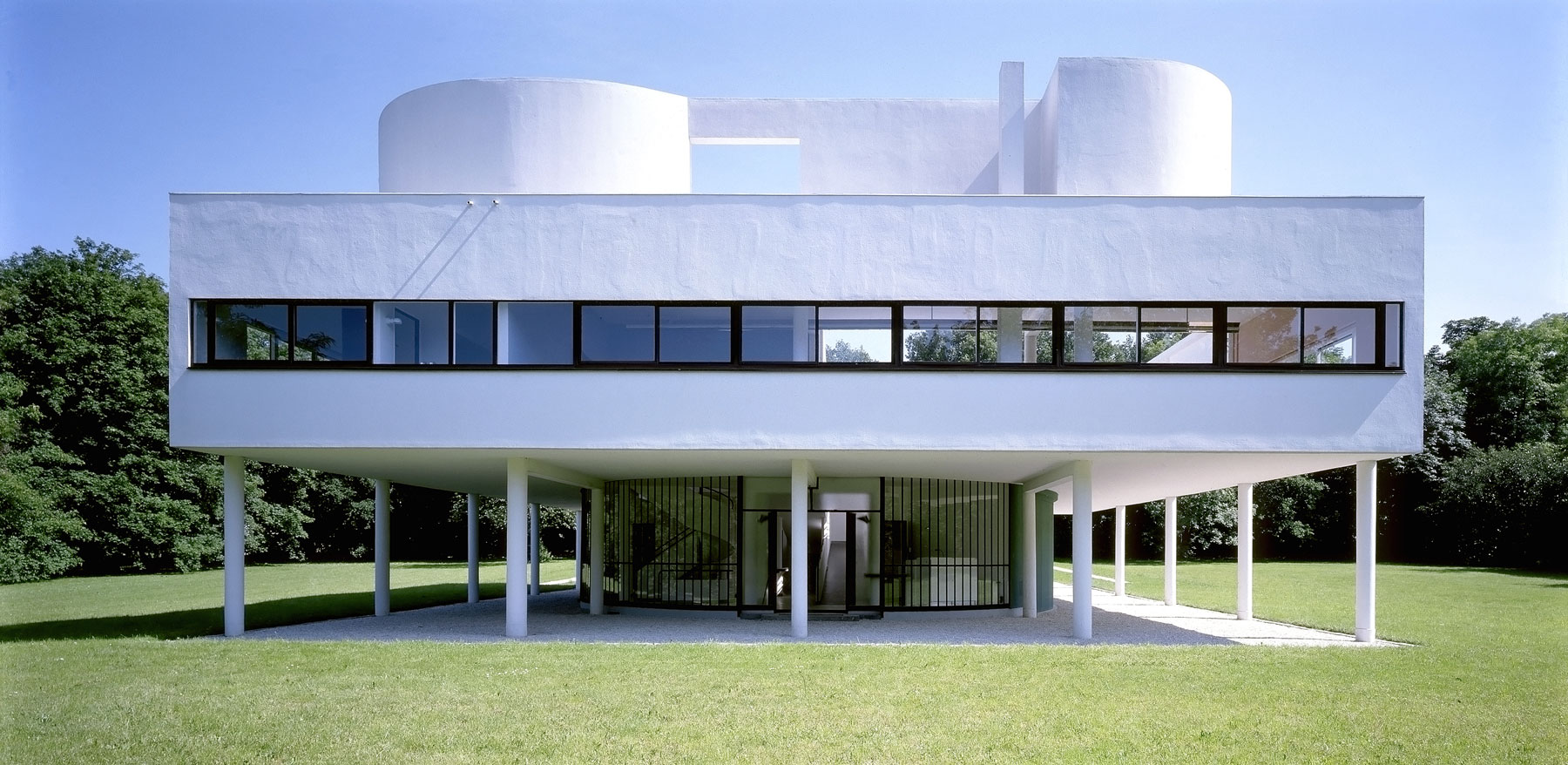
For the anecdote: Wishing to discover the Villa Savoye in Poissy, the architect did not dare to take the bus for fear of getting lost. He walked half a day to discover the house - erected in 1931 - in ruins ... Tadao Andō will say, a little later, of Le Corbusier that "from him, I learned freedom and courage!"
After his numerous trips, he opened his own studio in 1969, in Osaka, Japan. From the 1970s, he began his first projects, between small stores and houses, allowing him to develop his own architectural style.
The beginning of his career coincided with a demographic explosion in the city of Osaka. Faced with the significant increase in construction for the population, the urban landscape became more and more heterogeneous, calling into question the serenity of Japanese interiors. Everything had to be rebuilt after the war and developers opted for rational, functional and economical buildings, far from the traditional concepts and values that had previously nourished the country's architecture. In order to break with the external agitation, Tadao Andō seeks in his constructions to establish an environment conducive to calm.
"They forgot the emotion, the symbolism, the joy of living" he laments in Michael Blackwood's 1988 documentary. "These are the elements that I always wanted to restore in my work" he adds.
In addition, the architect uses reinforced concrete, a material that responds perfectly to the problems of the many earthquakes that Japan has experienced. Through this anti-seismic material, he develops a language of his own, between geometry and simplicity of forms.
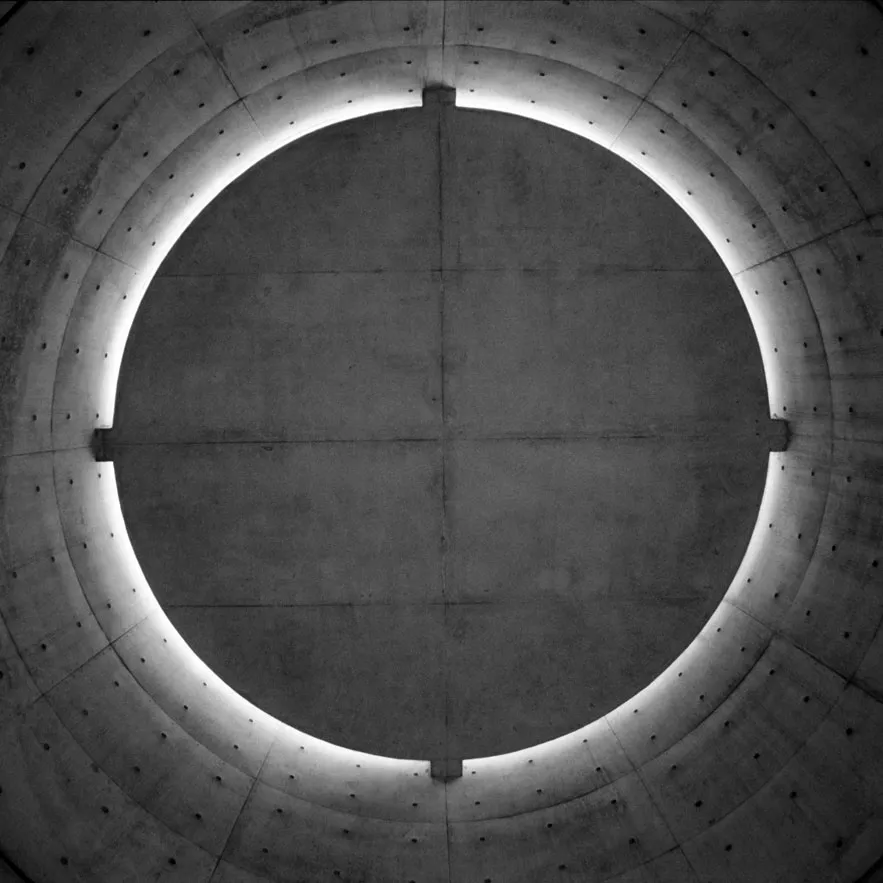
Tadao Andō became known to the world with the "Azuma House", located in Osaka and built between 1975 and 1976. This residential house made of concrete with exposed holes, is 65 square meters and has two floors. From the outside, only the façade is visible.
Isolated among the other houses, it is characterized by blind walls and a patio in the center. Inside, the house is divided into three segments. The open-air patio is the epicenter of the house. To reach the different parts, you have to go outside and immerse yourself in the environment. The patio brings not only light but also a bubble of serenity, always in contrast with the urban agitation. This house with its pure spaces lays the foundations of the architect's approach: light, the importance of the walls and the spaces of division, and the materials used.
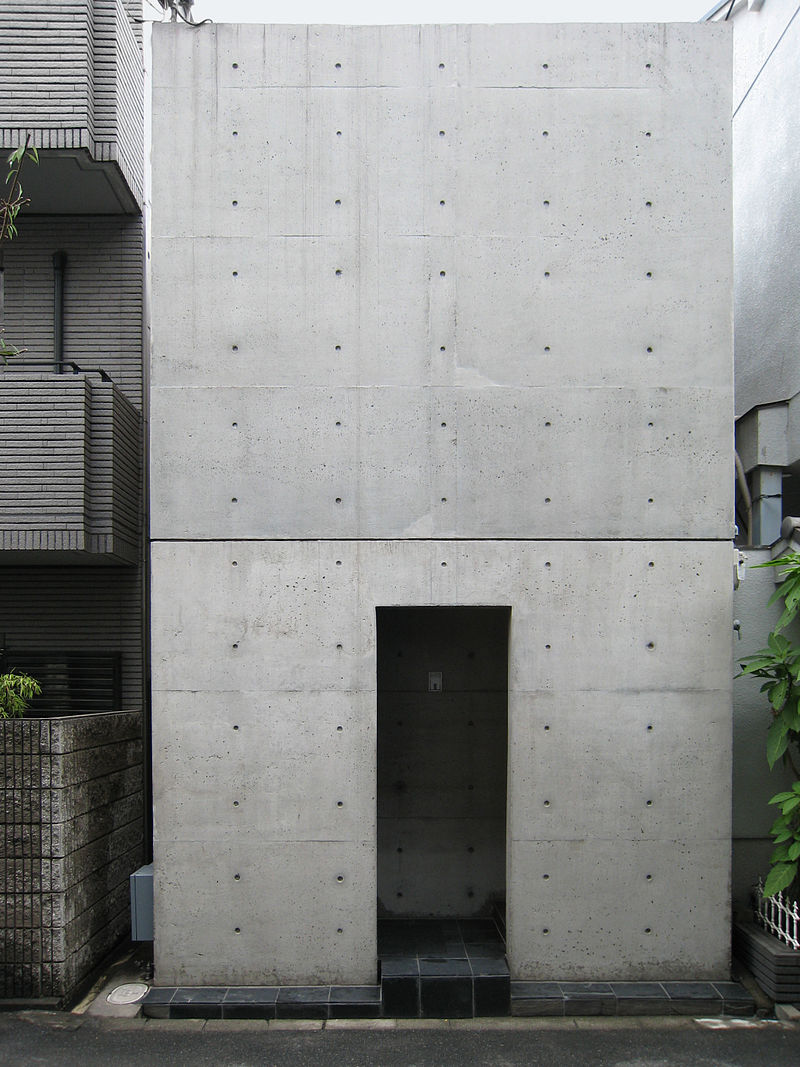
His architecture is built from pure geometry and natural elements. The geometry that highlights the beauty of volumes brings to his work, an obvious poetic form. This is what we can see in his religious constructions with notably the "Church of Light", built in 1989, in the northwest of Osaka, in the city of Ibaraki.
The church, made of concrete and wood, is cubic in shape. We can see a hole in the wall in the shape of a cross. If, from the outside, the building is extremely sober, inside, this cross pierced by the light totally floods the space. Thus, this cross of light sublimates the space in which it is inscribed, bringing an obvious spiritual dimension. In this architectural humility, the light which evolves with the day and the seasons, becomes symbolic. Silence and light are thus architectural elements in themselves.
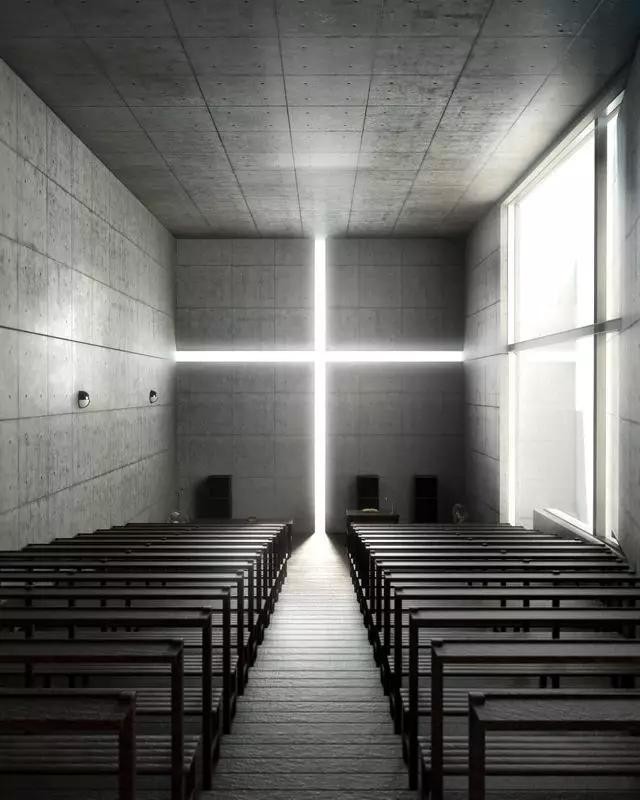
The architect plays with space and emptiness, shadow and light, creating for the visitor "an experience of space". Beyond the architectural dimension, the artistic language expresses an interiority for the person who evolves in these spaces. In this dialogue between the interior and exterior, Tadao Andō seeks harmony and balance between the elements. This search is perfectly illustrated by the "Chapel on the Water" in Tomamu, which dates from 1991. Sublimated by the environment that surrounds it, the building evolves according to time and seasons.
Inside his buildings, he creates complex circulation paths that oscillate between the exterior and interior spaces. The geometry of the spaces builds paths that lead to contemplation. In this way, we find the philosophy of Zen and haiku.
The haiku is a vertical Japanese poetry that highlights the evanescence of the elements that surround us. A poetry that gives importance to sensations.
Moreover, the impermanence and fragility of things, omnipresent in the Shinto tradition, are also key elements in understanding the architect's work.
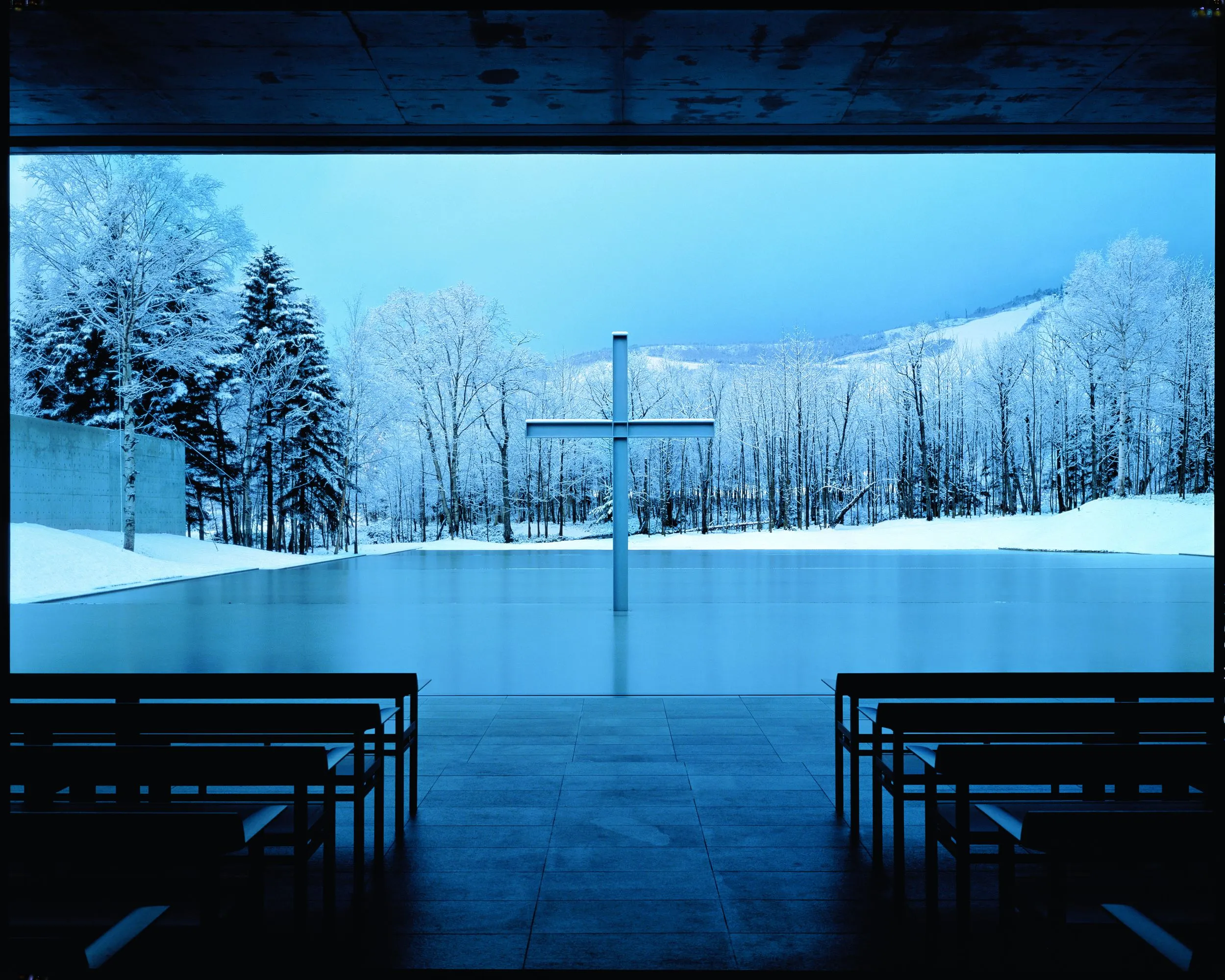
The first major clients arrive from the West. Luciano Benetton was one of the first to hire him for the Research Center of his group in Treviso, Italy. He then worked for Giorgio Armani, who asked him to create a fashion theater in Milan, and then for Karl Lagerfeld, who proposed the creation of a villa workshop near Biarritz over a Diet Coke on rue de l'Université. The first drawings are launched.
"If architecture is the new passion of fashion, then Tadao Andō is the sexiest man on earth" laughed the New York Times in 2001. Due to a lack of building permits, the Biarritz project was never built, but the two men became friends. "It was he who introduced me to François Pinault at that time. It was more than thirty years ago" confides the artist today.
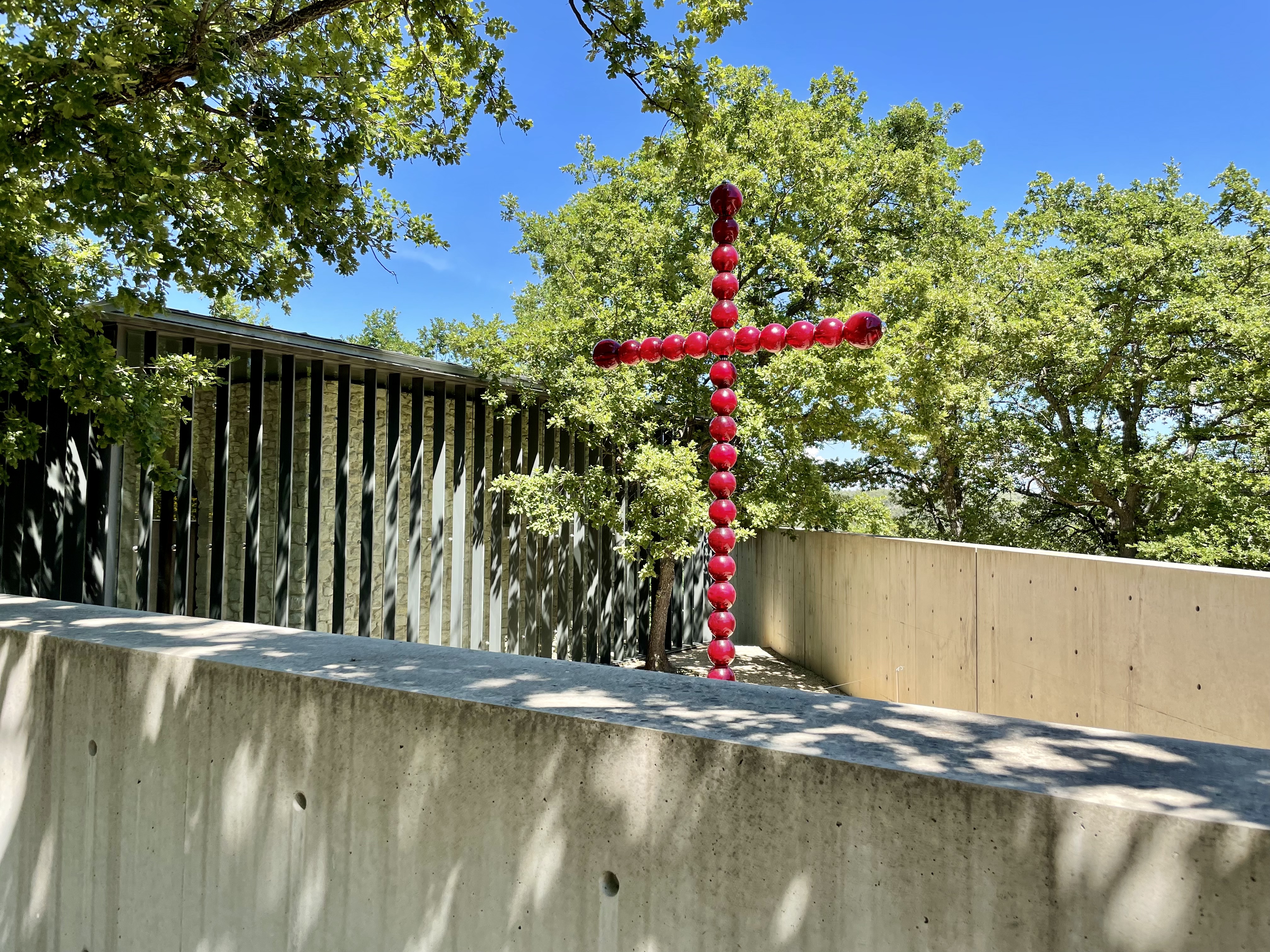
The current passes immediately between these two self-taught people of modest origin with rough characters. The businessman, founder of Kering, entrusted the Japanese with the construction of his contemporary art foundation on the Ile Seguin, in Boulogne Billancourt. He indicated that he had chosen him for "his poetic approach". But the project got bogged down for political and administrative reasons and François Pinault decided to go and exhibit his collection in Venice.
Tadao Andō is part of the adventure. He first renovated the Palazzo Grassi, this time playing with triangles of light, and then the Punta della Dogana, where the interior space was reorganized around more cubic structures respecting the original forms of the former customs building of the City. Always this quest for the essential and this fusion with the environment.
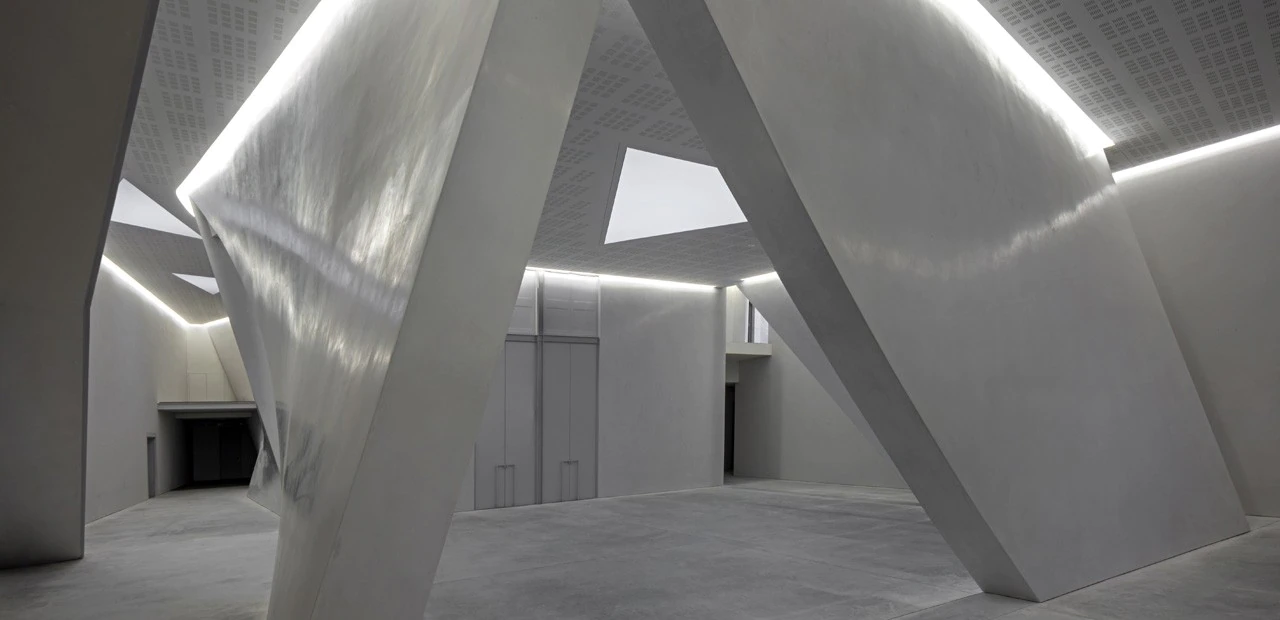
In order to highlight his collection, François Pinault wished to safeguard and rehabilitate an emblematic monument of Parisian heritage. For this work of transformation, he chose his Japanese friend... An obvious choice.
The history of the Bourse building begins in the 13th century. Based on the structure of the Hôtel de Soissons, its architecture bears witness to these successive periods: from the first isolated column in Paris, in the 15th century for Catherine de Médicis, to the construction of a wheat market in the 18th century, then a market covered from 1812 by a dome of metal and glass, to finally become the Bourse de Commerce, from 1885 until 2016.
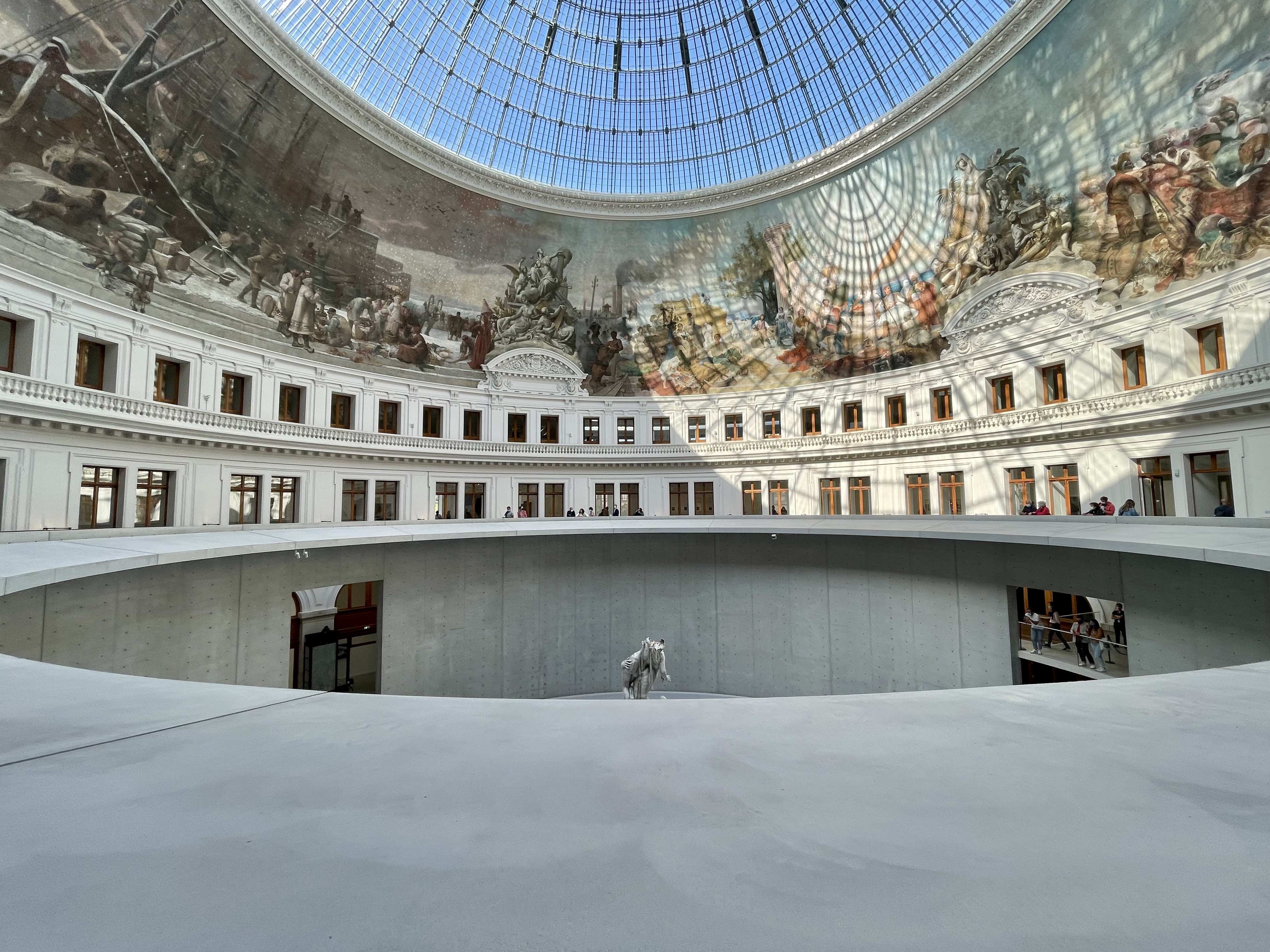
In 2006, the Bourse was bought by the City of Paris. It became a showcase for part of the contemporary art collections of the famous businessman. The place has 3,000 square meters of exhibition space, a restaurant on the third floor and a studio in the basement to host performances and conferences.
The construction work took place from June 2017 to February 2020. For this project, Tadao Andō wanted to bring a contemporary impetus without interfering and distorting the building, which is classified as a historical monument. In this sense, he creates a structure within a structure like a nesting box.
He then uses the motifs of the circle and simple geometry, motifs that are close to his heart. He thus created an interior passageway 91 meters long and 9 meters high, allowing the works to be observed. In this living space, we are offered a lively dialogue between the architecture and its context, contemporary creation and heritage, the past, the present and the future, and finally, between the collection and the visitor.
The Bourse de Commerce - Pinault Collection thus becomes Tadao Andō's most important achievement in France.
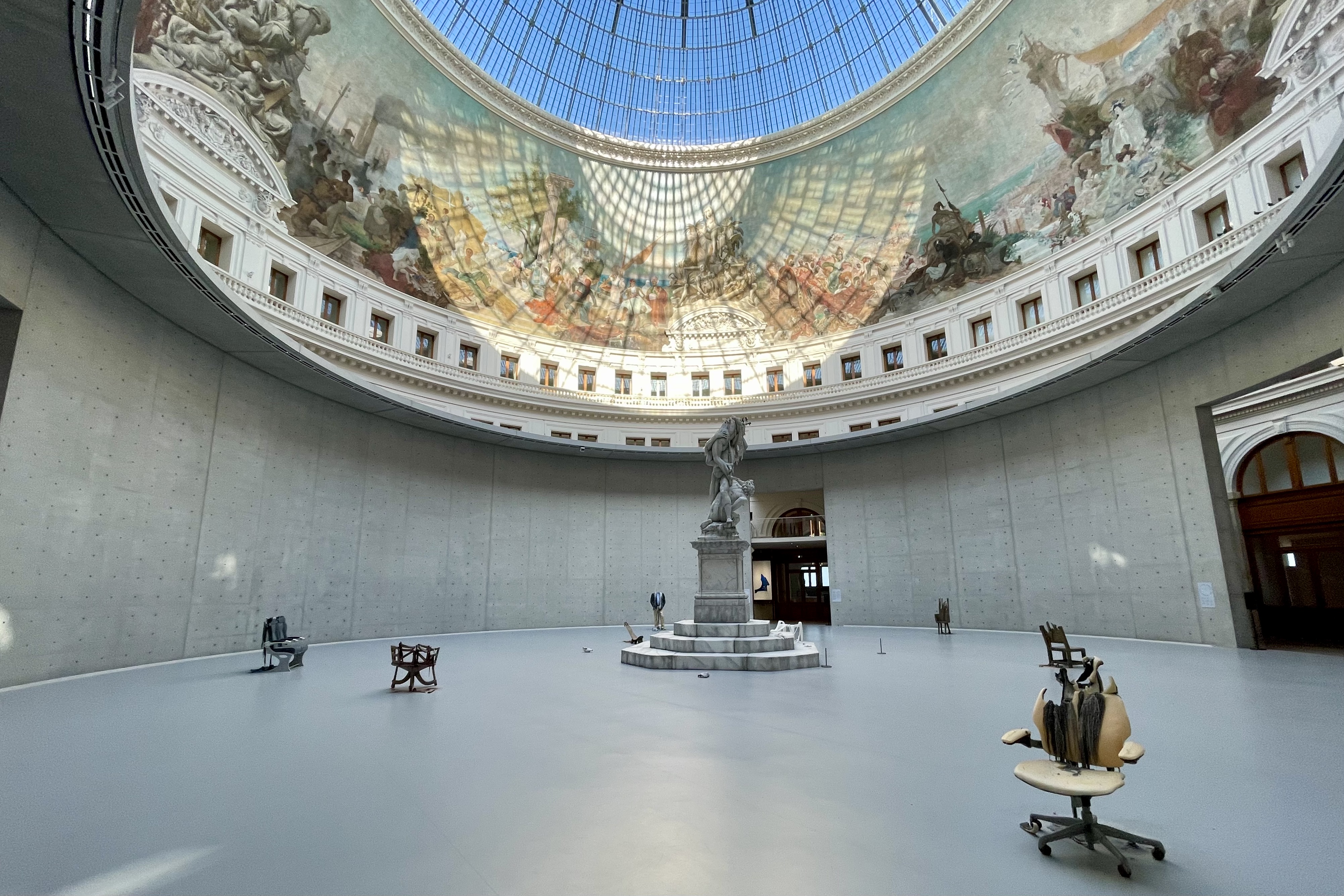
It would be difficult to list all of Tadao Andō's work because it is so dense and international. There are no less than 300 architectural achievements!
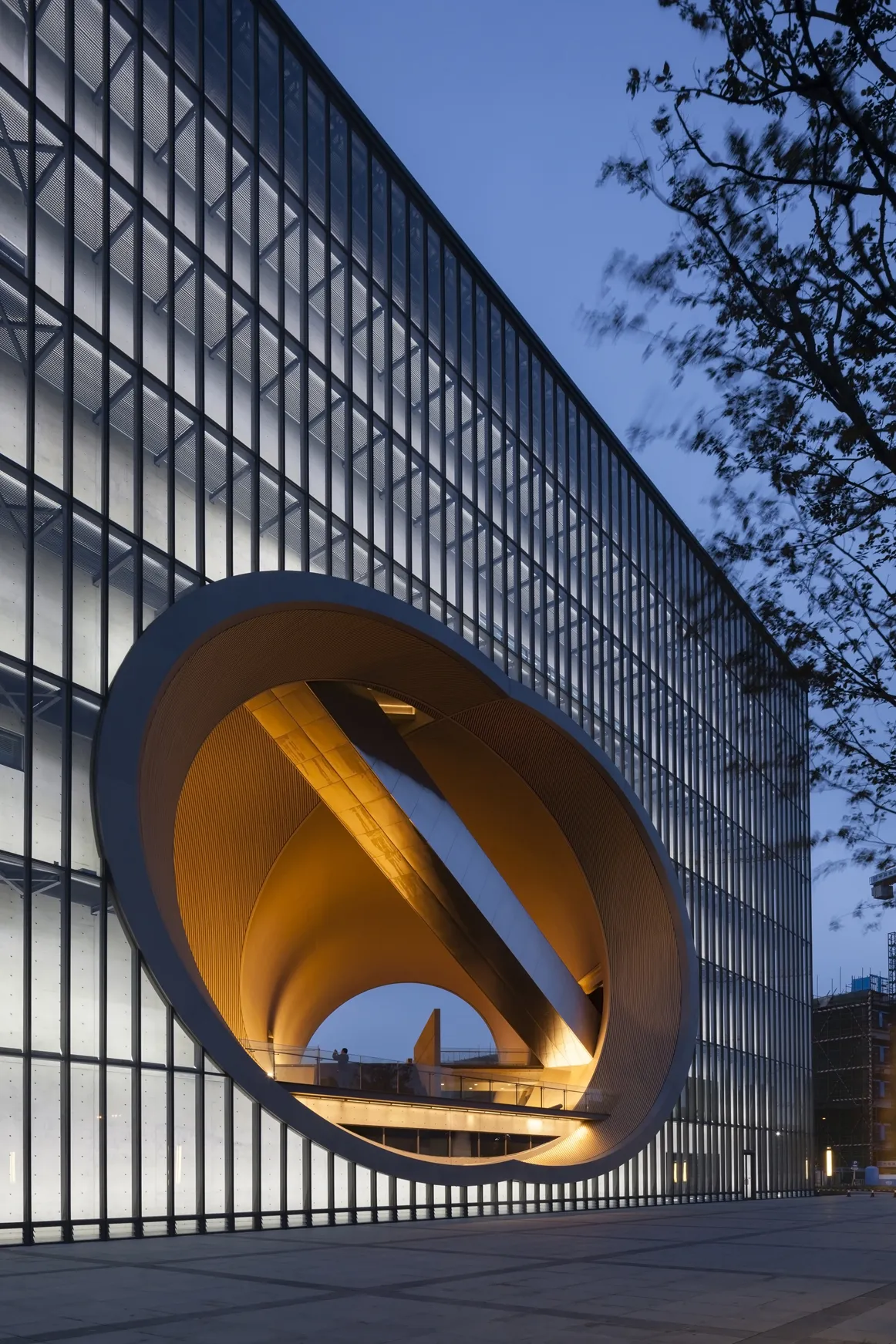
He has carried out his work almost everywhere in the world. The Bourse de Commerce is, at this date, his last achievement. As one of the most renowned architects in the world, he has received prestigious awards throughout his career: first the Alvar Aalto Medal in 1985, then ten years later, the Carlsberg Architectural Prize and the Pritzker Prize.
In 2002, he was awarded the Kyoto Prize, and in 2018, the Centre Pompidou devoted a retrospective to him. The architect's style is not only known worldwide, but it is also very recognizable. Concrete, light and the circle motif are elements that gravitate to his world.
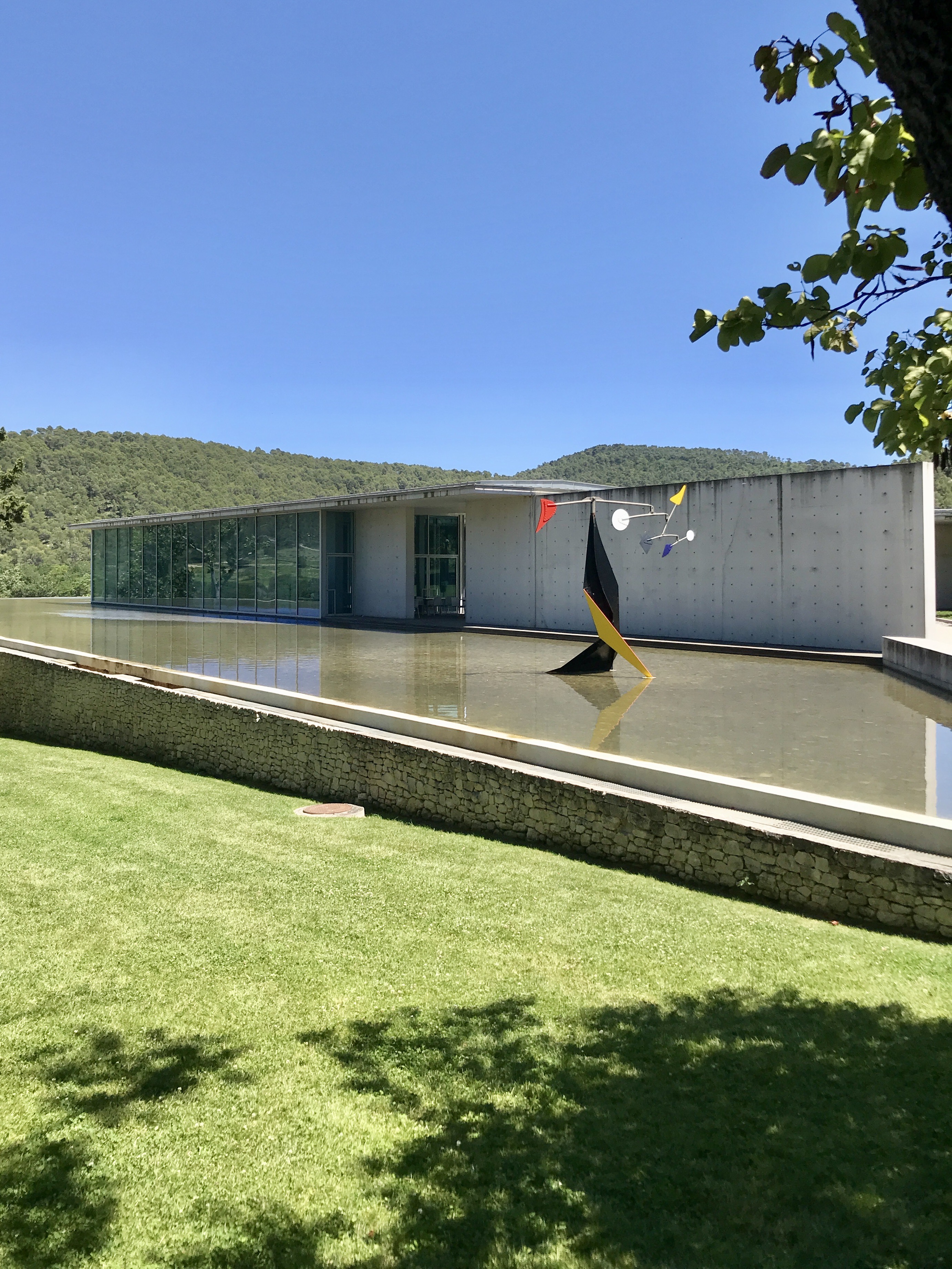
"The creation of space in architecture is simply the condensation and purification of the power of light. In my work, light is always a critical element in the staging of the entire space, as it allows for the creation of unexpected visual effects."
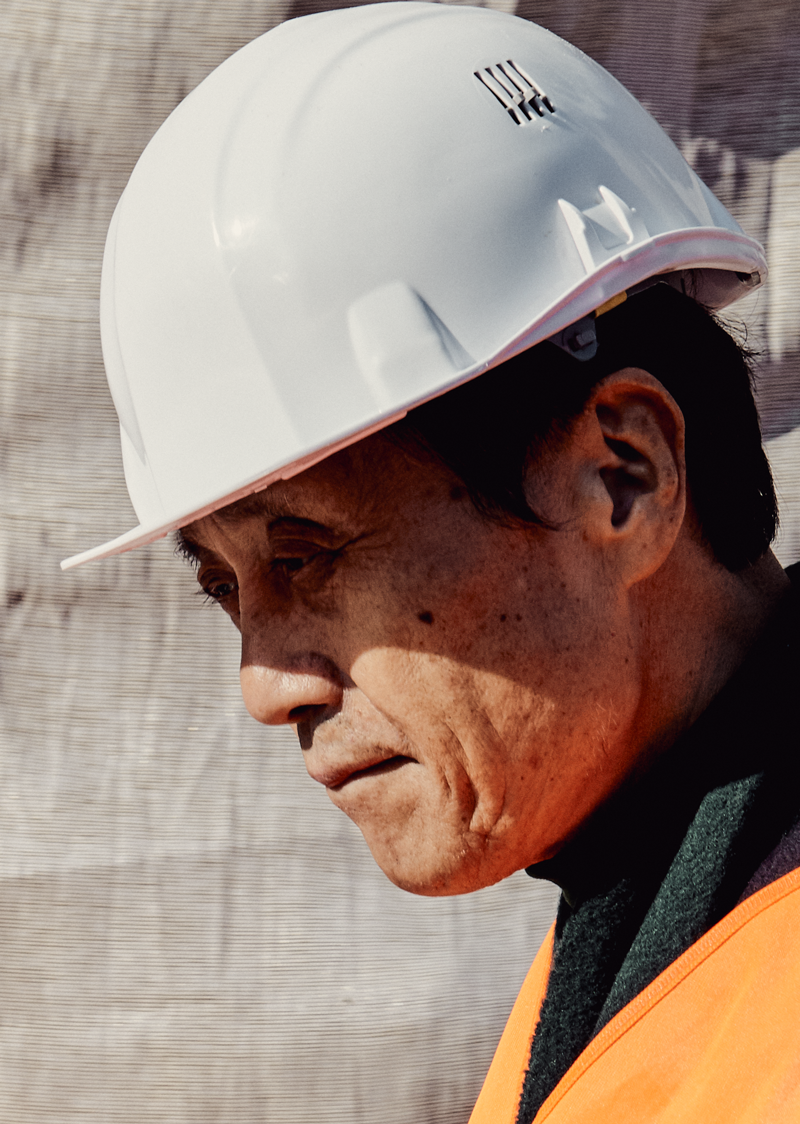
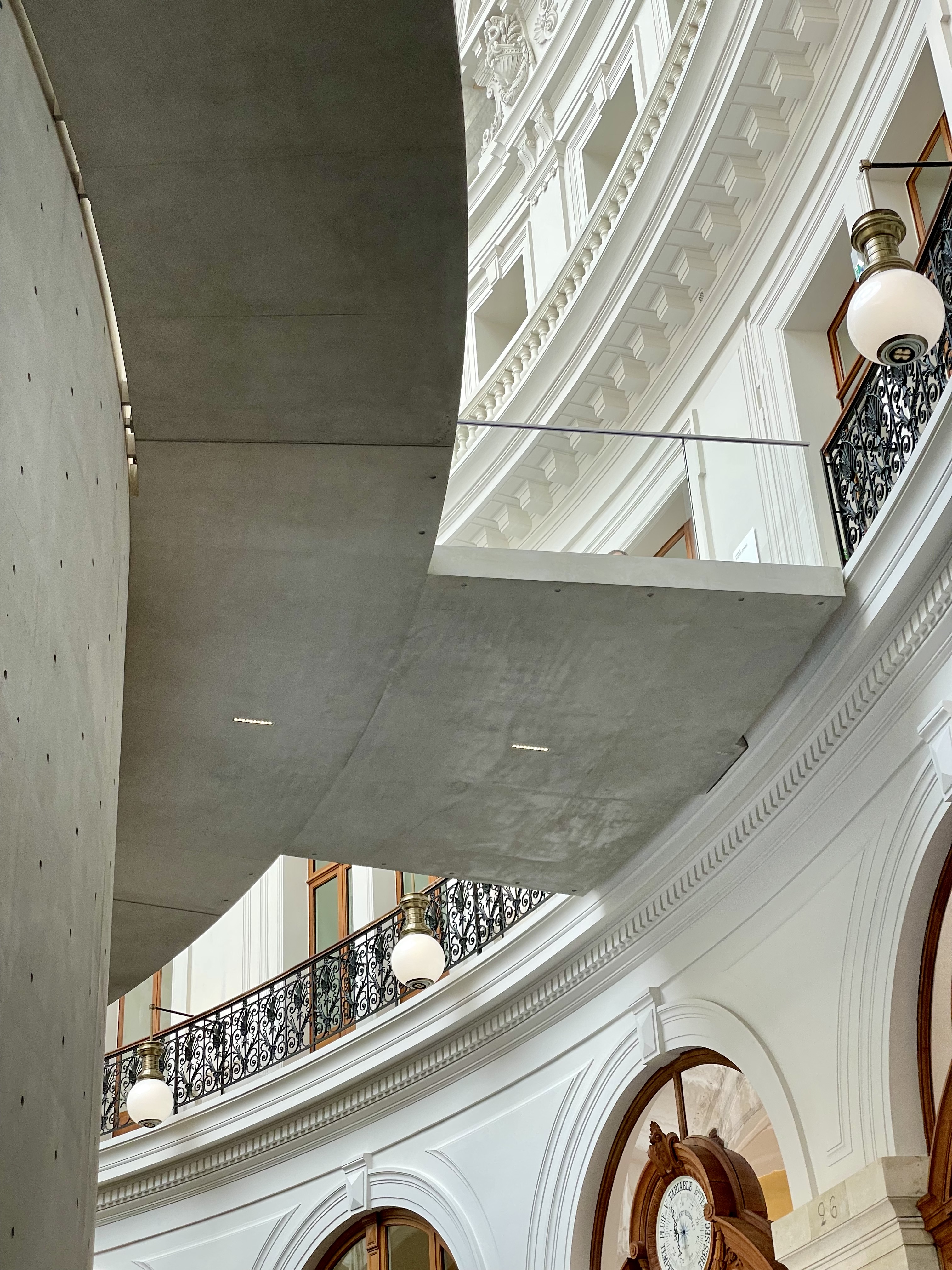
Styles's journal